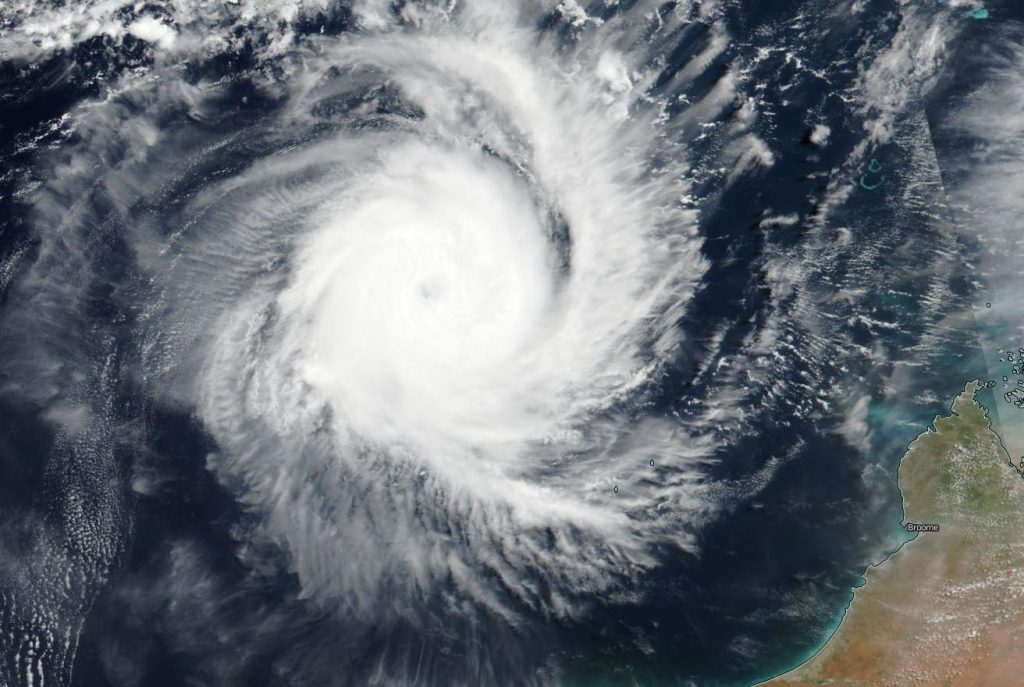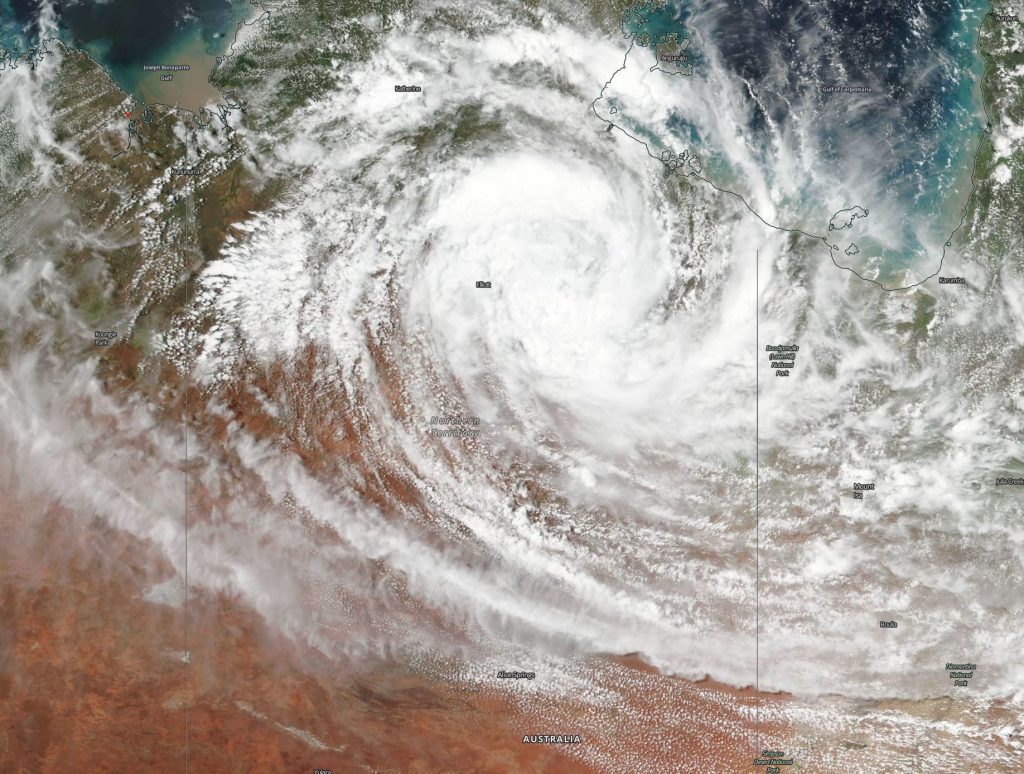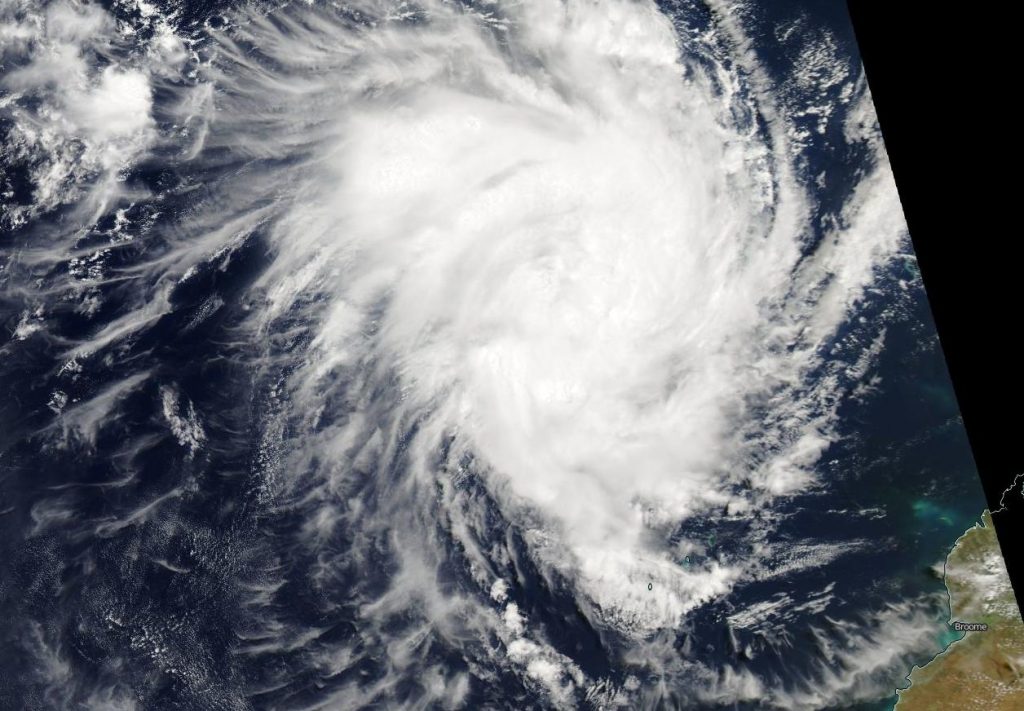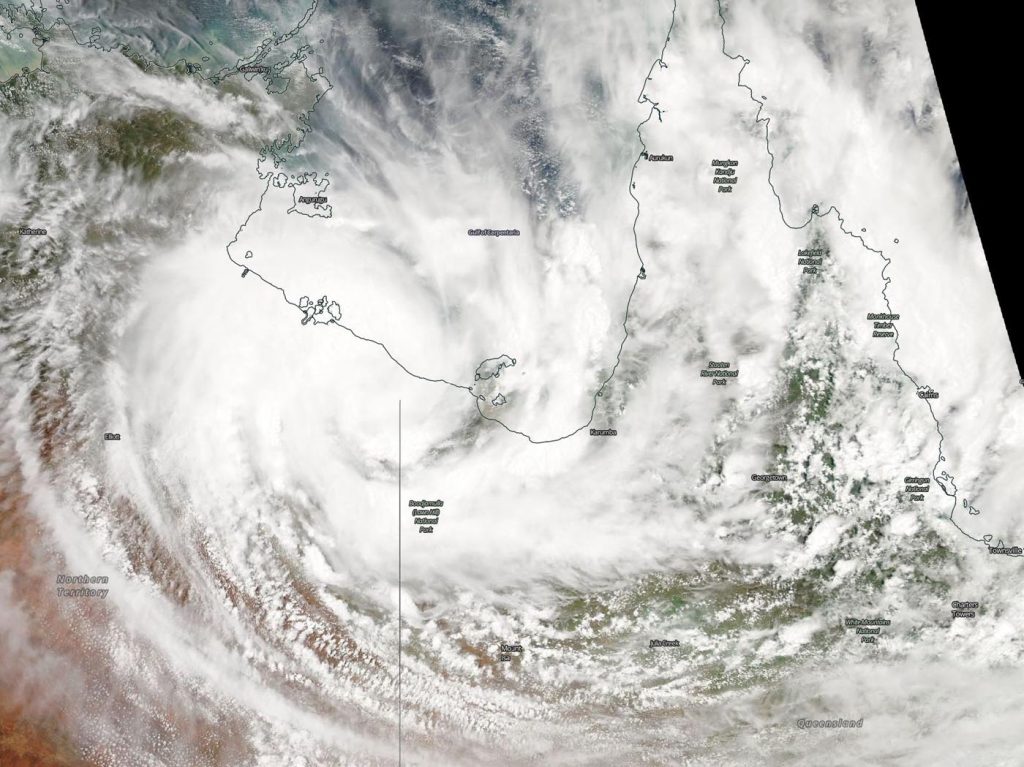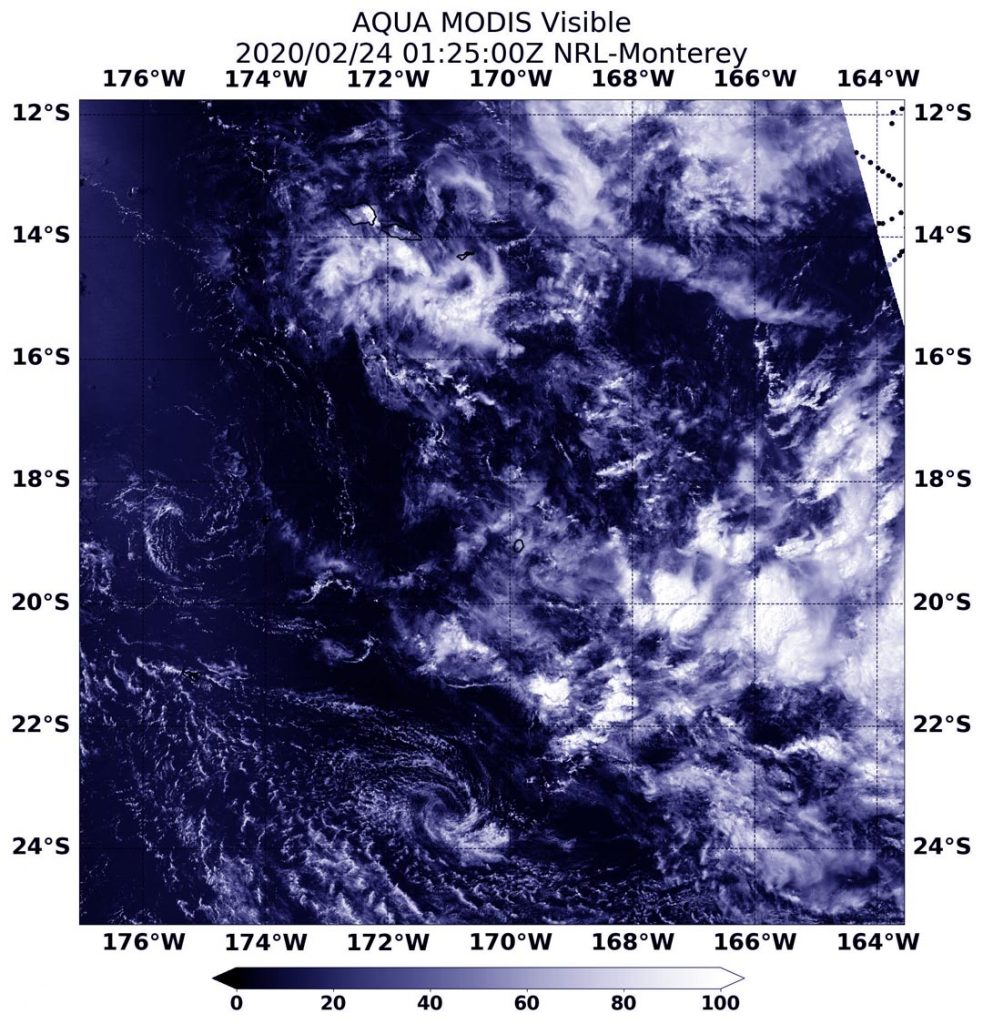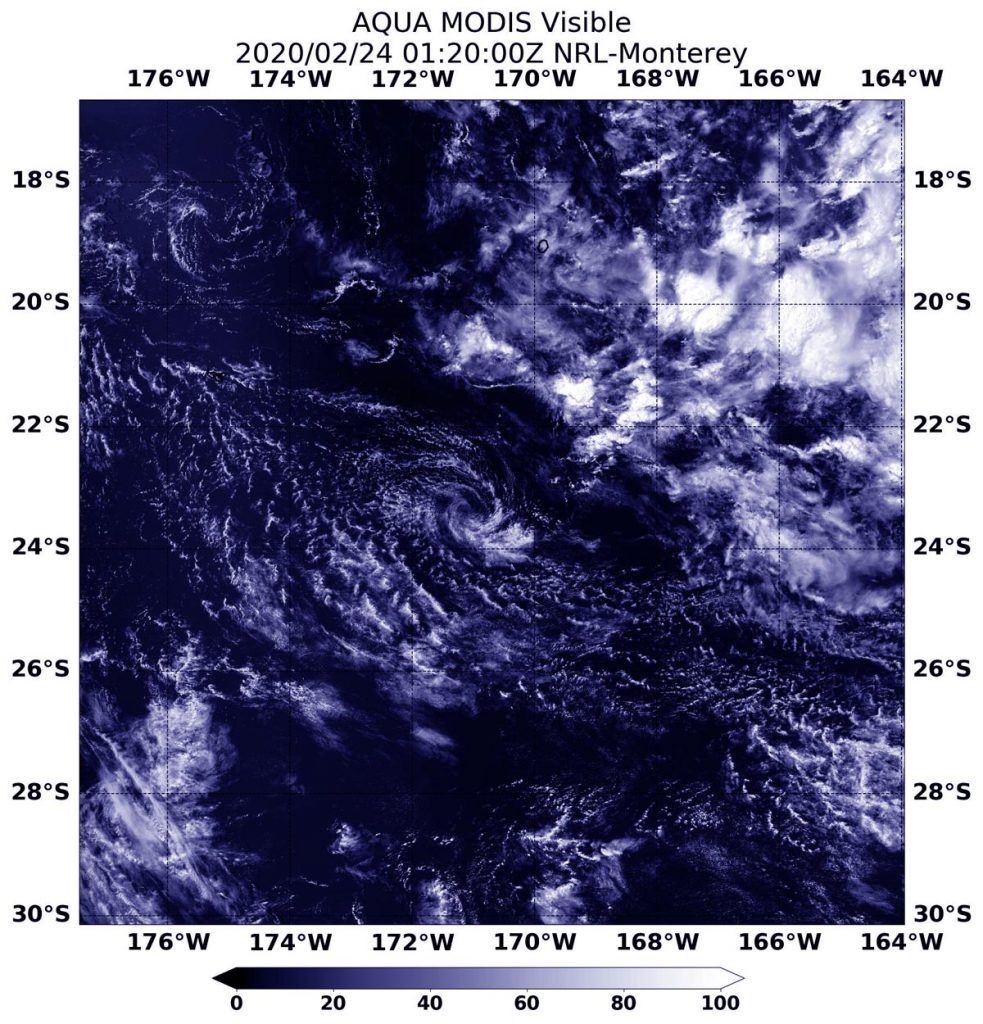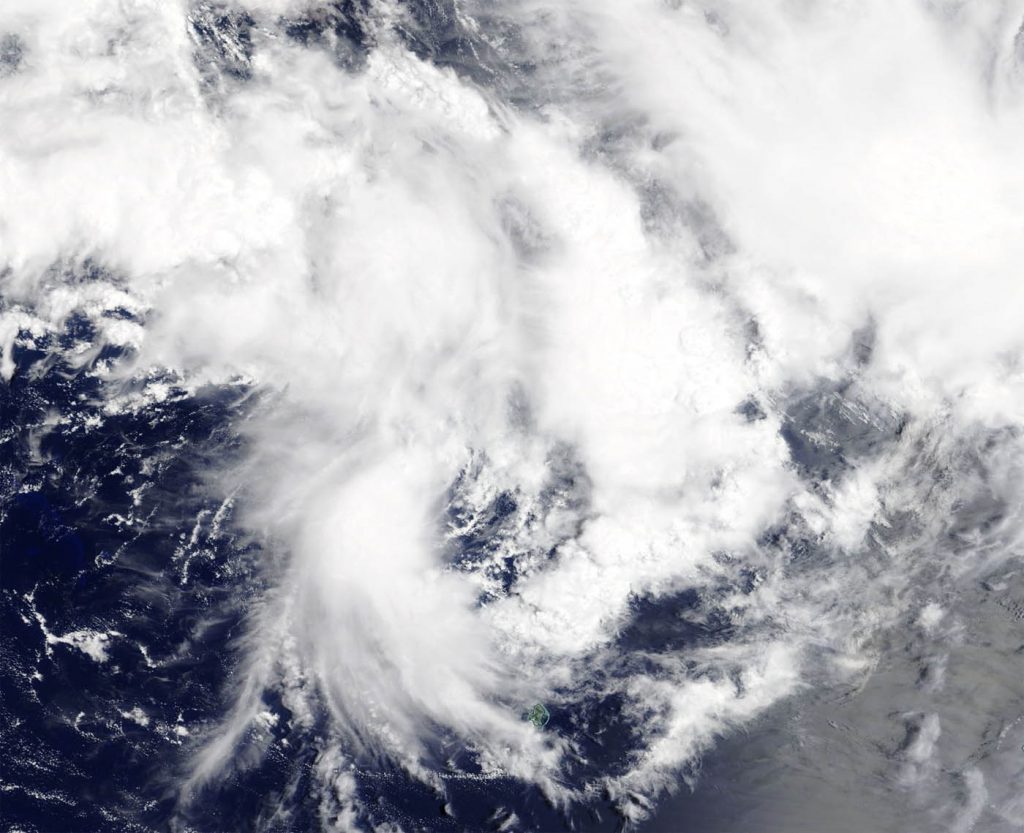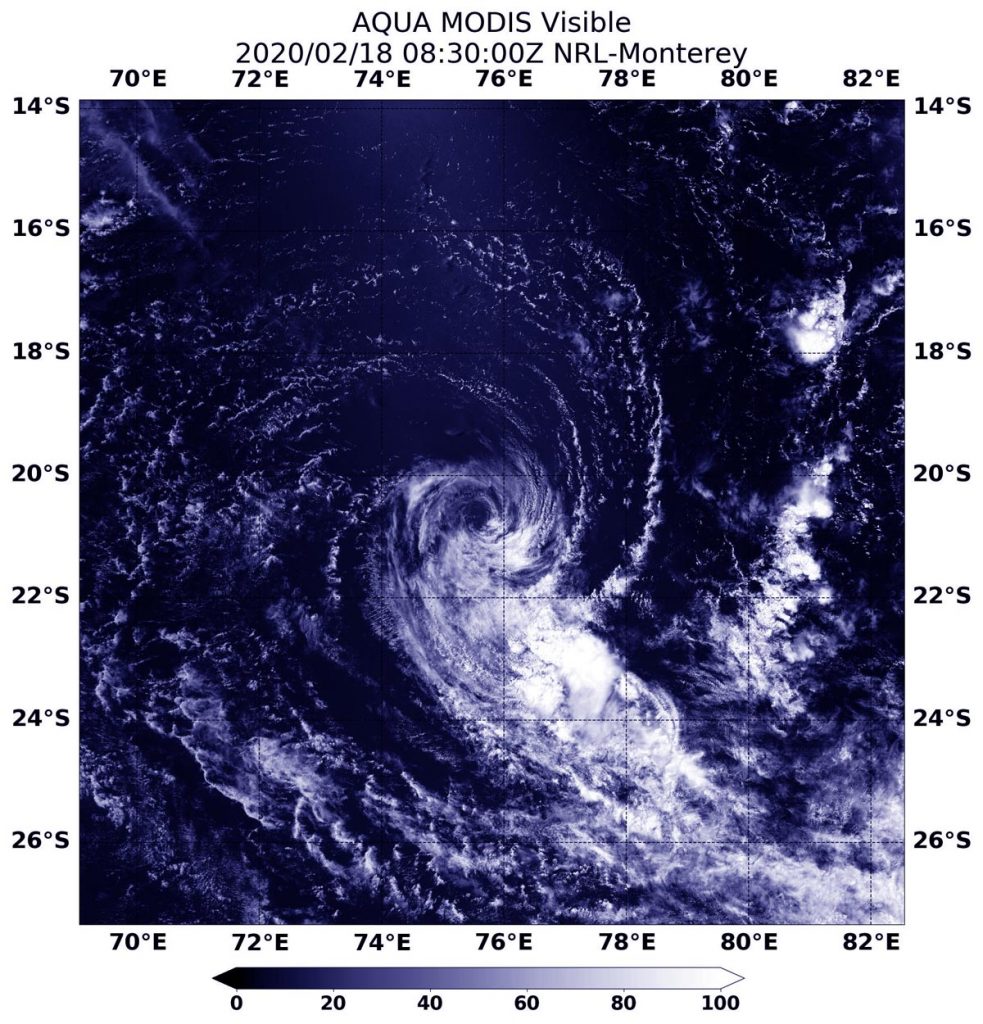Feb. 26, 2020 – NASA Analyzes Tropical Cyclone Ferdinand’s Water Vapor Concentration
When NASA’s Aqua satellite passed over the Southern Indian Ocean on Feb. 26, it gathered water vapor data that provided information about the intensity of Tropical Cyclone Ferdinand.
NASA’s Aqua satellite passed over Tropical Cyclone Ferdinand on Feb. 26 at 1:05 a.m. EST (0605 UTC),) and the Moderate Resolution Imaging Spectroradiometer or MODIS instrument gathered water vapor content and temperature information. The MODIS image showed highest concentrations of water vapor and coldest cloud top temperatures were around the center of circulation.
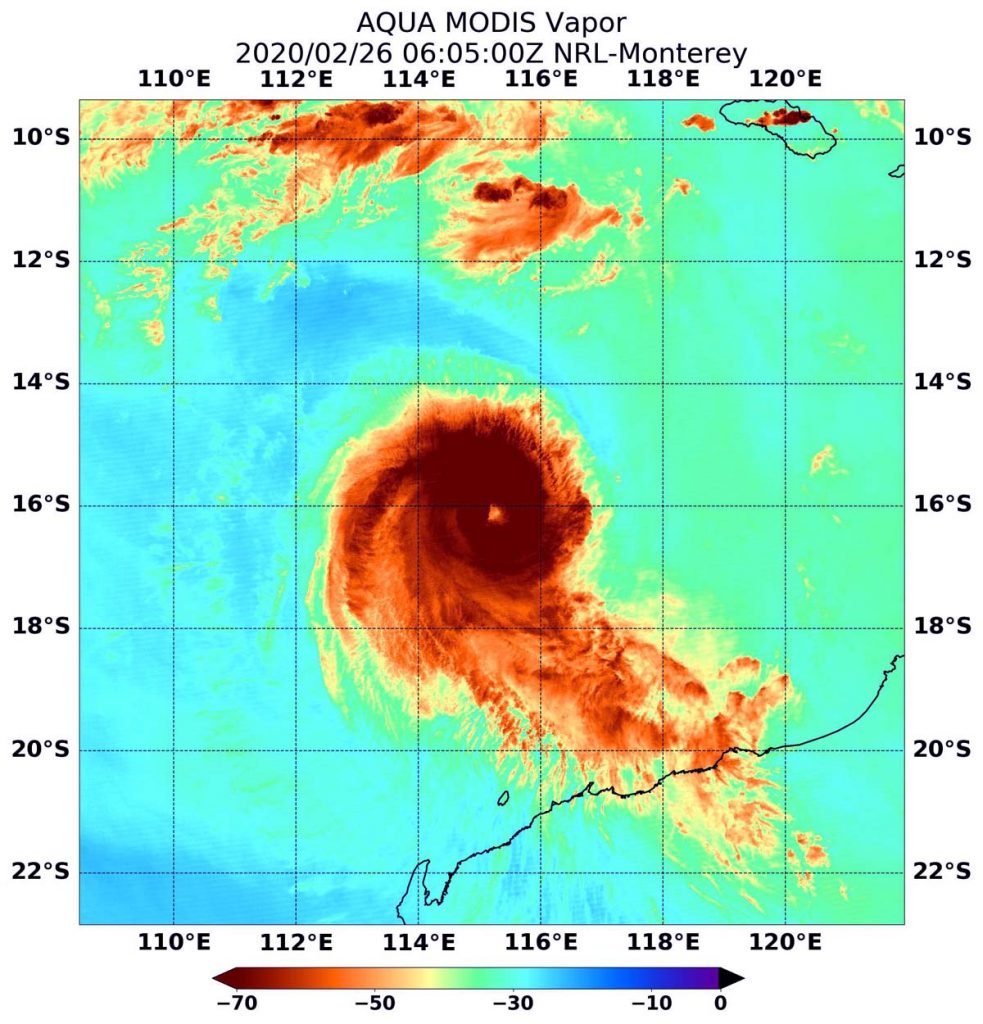
MODIS data also showed coldest cloud top temperatures were as cold as or colder than minus 70 degrees Fahrenheit (minus 56.6 degrees Celsius) in those storms. Storms with cloud top temperatures that cold have the capability to produce heavy rainfall.
Water vapor analysis of tropical cyclones tells forecasters how much potential a storm has to develop. Water vapor releases latent heat as it condenses into liquid. That liquid becomes clouds and thunderstorms that make up a tropical cyclone. Temperature is important when trying to understand how strong storms can be. The higher the cloud tops, the colder and the stronger the storms.
The Australian Bureau of Meteorology (ABM) noted that no warnings were in effect for Western Australia as Ferdinand remains far from land areas. At 8:57 p.m. WST (7:57 a.m. EST), ABM noted that Severe Tropical Cyclone Ferdinand (Category 3) was located near 16.4 degrees south latitude and 114.8 degrees east longitude, about 530 km (329 miles) north-northwest of Karratha and 620 km (385 miles) north of Exmouth and moving southwest at 7 kilometers (4 miles) per hour. ABM forecasts that Ferdinand will move slowly toward the west-southwest over the next few days and remain well north of the Western Australia mainland. On Thursday, Feb. 27, the Ferdinand is expected to begin a weakening trend and may be below tropical cyclone intensity late in the week or early weekend. No significant impacts are expected over the Western Australia mainland.
NASA’s Aqua satellite is one in a fleet of NASA satellites that provide data for hurricane research.
Tropical cyclones are the most powerful weather event on Earth. NASA’s expertise in space and scientific exploration contributes to essential services provided to the American people by other federal agencies, such as hurricane weather forecasting.
For updates from ABM, visit: http://www.bom.gov.au/
Rob Gutro
NASA’s Goddard Space Flight Center, Greenbelt, Md.

